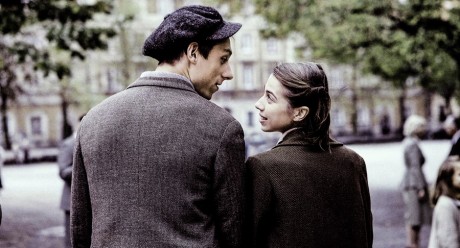


Jola Dylewska: Marek Edelman… and there was Love

in the Ghetto… made in cooperation with Andrzej Wajda and Agnieszka Holland
Marek Edelman (1919-2009): Holocaust survivor and the last leader of the Warsaw Ghetto. When being interviewed – close up of his face, smoking one cigarette after the other – he appears to be a grumpy old man apparently not liking all the questions, at the same time as he enjoys, and he does that very well, to talk about the women he knew, the couples he remembers. No talk about the horror in the ghetto, there was (also) love in the ghetto. That’s what Edelman wants to remember. There is a text at the end credits: “He always said: “It’s easy to hate, but love requires effort and dedication”.
It’s about Love in the Ghetto in a film that is built up in a very simple way: Edelman talking, b/w archive from the ghetto, love songs, and staged scenes mostly with no dialogue, love scenes, well made, mostly without dialogue, co-written by Holland and co-dramatised by Wajda.
It sounds schematic but it works, it is touching, there is a fine never bombastic editing from Edelman to the staged scenes to the strong archive photos from the ghetto. There is Tosia, the nurse, Dola the red-haired beauty, Pola who leaves her boyfriend to go with her mother to the Umschlagplatz, where the wagons were waiting for them.. as they were for the blond Hendusia Himelfarb, who could have been saved, Edelman said to her, but who chose to walk with the children from the sanatorium…
Umschlagplatz – Edelman stood there watching the crowds – thousands of people – passing by, waiting to see if some of his pals came that way. “What could you see in their eyes”, the director asks him,”Nothing, it was one big crowd passing me”.
It is painful for him to talk about it, he responds irritated and he refuses to say yes to the director, when she says that the wagons were going to the gas chambers. ”I don’t know”. He himself was working at the hospital, he had a card to show, so he was not deported. In a scene from the hospital white cards are distributed, a woman gets one but wants it to be passed on to her daughter…
There is a monument in Warsaw, where the Umschlagplatz was. You see it in the film. On the wall it is written: Between 1942 and 1943, more than 300,000 Jews from the ghetto that had been established in Warsaw went to the Nazi death camps along this path of suffering.
Poland, Germany, 2019, 80 mins.